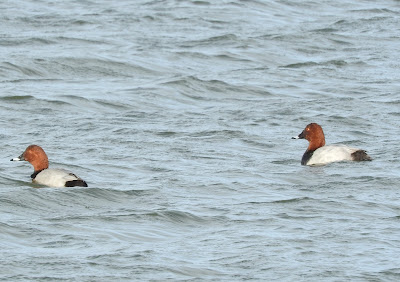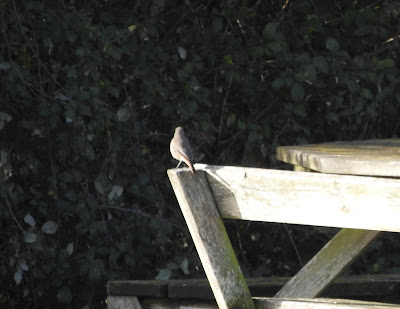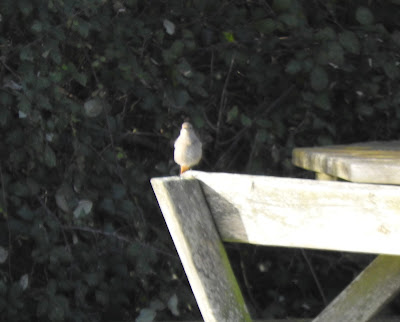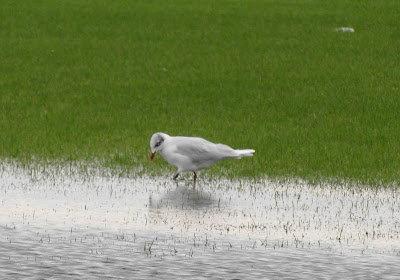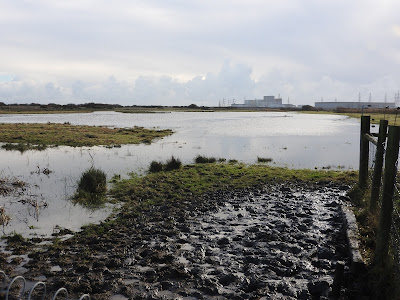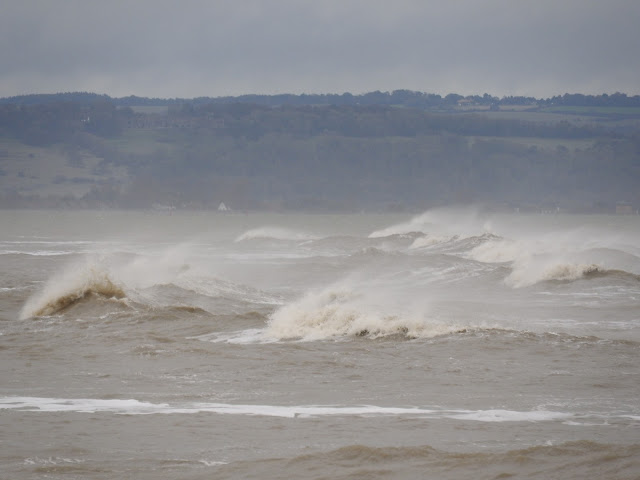Lade/Dungeness - Heavy rain showers, WSW 4 - The past couple of days our Ted walks have commenced at Littlestone, dipping in and out along the bay before ending up at Dungeness. All ten `regular` species of waders have been noted on the sands, although Knot and Ringed Plover took some finding; a count of 65 Turnstones at the Varne was of note yesterday. None of the storm-blown seabirds came into the bay as far as I could see, apart from an Arctic Skua today, although the visibility was dreadful due to the rain and spray over the sea. The highlight for me at the fishing boats yesterday afternoon was the westward gull passage with many Little Gulls and Kittiwakes just offshore; in all nine species were logged including hundreds of Common and Mediterranean Gulls, plus the juvenile Sabine`s Gull that has been present all week, periodically flying up and down the beach. This afternoon was spoilt by the lashing rain but I did manage to see 10 Little Gulls, three Arctic Skuas, a Bonxie and a Leach`s Petrel, plus a flyby Purple Sandpiper near the `dustbin`, courtesy of JTM. Although the petrel passage slowed up today, more were reported earlier this morning along with a few Sooty Shearwaters and a Long-tailed Skua.

Little Gull off the fishing boats
Arctic Skua off Dungeness
PS - Petrel `wreck` - The pelagic fallout resulting from the recent Storm Ciaran has revealed some fascinating statistics (thanks to Martin C and David W for updating the various blogs). The main players have undoubtedly been the `wrecked` Storm and Leach`s Petrels (in unprecedented numbers for Dungeness) with 84 and 203 respectively on Thursday, nearly all heading east; followed by 44 and 57 respectively on Friday (and a few more today), mostly heading west as they re-orientated and returned to the open ocean to continue their southward migrations. Storm Petrels are thought to winter in the great Southern Ocean off South Africa, while Leach`s Petrels prefer the milder waters of the tropics, although some may winter in the north Atlantic. In contrast there was only one Grey Phalarope and two Sabine`s Gulls, and hardly any skuas and no shearwaters on the first two days, although it was good to see plenty of Little Gulls throughout as they`ve been few and far between this autumn. The wind direction on Thursday was SSW Force 10 and WSW Force 5 on Friday, which favoured `our side` of the Channel for seawatching in the shelter of the fishing boats etc, but not so on the opposite side at Cap-Griz-Nez where you have to scramble down a slippery, chalk cliff to the seawatch site! However, on Friday the locals made it down the cliffs and logged 24 Leach`s and 11 Storm Petrels, which begs the question as to how many more petrels passed through the Channel unseen during the storm in troughs and at night time; probably thousands, but we shall never know... Petrels are something of an avian enigma to most southern birders, turning up briefly after autumn storms and disappearing back to the ocean almost as quickly as they came - just how a bird the size of a sparrow can survive in one of the most hostile environments on Earth, the Southern Ocean, is a mystery to me, but in the words of Richard Dawkins that is, "the magic of reality".










